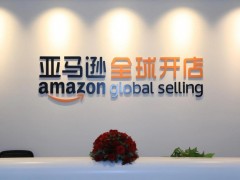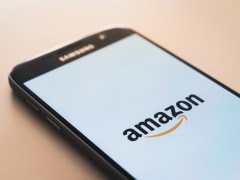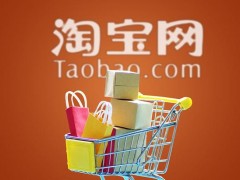What are the Internet technology schools of unmanned retail?
当前无人零售技术大致可分为以下三大流派:
1、人工智能流派:以Amazon Go、阿里淘咖啡、Take Go为代表,主要采用机器视觉、深度学习算法、传感器融合技术、卷积神经网络、生物识别等技术。
2、物联网流派:以缤果盒子为代表,主要采用 RFID 标签技术。
3、互联网流派:以便利蜂、小e微店为代表,主要利用二维码来完成对货物的识别。
从目前试运行与投入商用的无人零售店来看,现有无人零售的主流技术类型主要有以下四种技术类型:
第一种是传统超市普遍使用的二维码扫码技术,这种技术相对简单,但消费者扫码与支付体验不够智能化。
第二种是无线射频识别技术(RFID),这是一种电子标签,利用射频通信实现非接触式自动识别,无须直接接触、激光扫描、人工干预即可完成信息输入和处理。目前运行的无人便利店使用这种技术的较多,例如缤果盒子等。
第三种是基于卷积神经网络的视觉识别技术,通过深度学习教会计算机认识商品,消费者自助购买时,计算机通过店内摄像头识别商品的类别价格,消费可以实现自动扣款,无需消费者人为结账。
第四种是在视觉识别的基础上添加视频识别与传感器混合技术,加入了更多的算法及人脸识别技术,正在测试阶段的Amazon Go就是采用了这种技术,其缺点是成本过高。
Professional answer
Current unmanned retail technologies can be roughly divided into the following three schools:
1. Artificial intelligence school: represented by Amazon Go, Ali Tao Coffee, and Take Go, mainly using machine vision, deep learning algorithms, sensor fusion technology, convolutional neural networks, biometrics and other technologies.
2. Internet of Things school: represented by Bingo Box, mainly using RFID tag technology.
3. Internet school: represented by Convenience Bee and Xiaoe Micro Store, mainly using QR codes to complete the identification of goods.
From the current trial operation and commercial unmanned retail stores, the current mainstream technology types of unmanned retail are mainly the following four types of technology:
The first is the QR code scanning technology commonly used in traditional supermarkets. This technology is relatively simple, but the consumer scanning and payment experience is not intelligent enough.
The second is radio frequency identification (RFID), an electronic tag that uses radio frequency communication to achieve contactless automatic identification, and can complete information input and processing without direct contact, laser scanning, or human intervention. Many unmanned convenience stores currently in operation use this technology, such as Bingo Box.
The third is visual recognition technology based on convolutional neural networks, which teaches computers to recognize products through deep learning. When consumers purchase by themselves, the computer uses the store’s cameras to identify the category and price of the products, and the payment can be automatically deducted without the need for consumers to check out manually.
The fourth is to add video recognition and sensor hybrid technology on the basis of visual recognition, adding more algorithms and face recognition technology. Amazon Go, which is currently in the testing phase, uses this technology, but its disadvantage is that it is too expensive.
First, the Internet of Things school refers to the use of RFID (radio frequency identification) sensors, sensors, barcode scanners and other technologies to achieve identification and settlement.
RFID technology was born in 1930 and was widely used during World War II. It is now very mature, but its disadvantage is that the cost is too high. Only one label costs about 1 yuan.
In addition, RFID has a lot of non-affinity media and cannot be applied to metal, liquid, and aluminum foil packaging. It also has serious misreading when encountering liquids due to wave absorption. In addition, RFID is easily shielded, and labels are easy to be torn due to sticking. The size and sensing distance are not easy to coordinate.
Similar Q&A
recommend What is the name of Alibaba's artificial intelligence?
E-c News Continuously pushing e-commerce knowledge to you








Latest Q&A More
-
Do I need a trademark to open a franchise store on Pinduoduo to sell books?
#Pinduoduo#
-
How to withdraw from a Pinduoduo store
#Pinduoduo#
-
How to withdraw from Pinduoduo merchants
#Pinduoduo#
-
How to pay fees when closing a Pinduoduo store
#Pinduoduo#
-
How to withdraw from Pinduoduo
#Pinduoduo#
-
Which store on Pinduoduo is authentic?
#Pinduoduo#
-
Which stores on Pinduoduo can buy genuine products?
#Pinduoduo#
-
How to check the store under Pinduoduo
#Pinduoduo#
-
How to receive Pinduoduo online game products
#Pinduoduo#
-
How to sell the electronic version on Pinduoduo
#Pinduoduo#
E-c News 2025-12-22 19:16:07

- African netizens use China Africa cross-border e-commerce platform for online shopping
- how is the new seller of cross-border e-commerce doing?
- how can cross-border e-commerce Amazon sell on Amazon platform without goods?
- Amazon store opening process and cost analysis!
- Amazon plans to expand its pharmacy business on a large scale and will add same day delivery service

